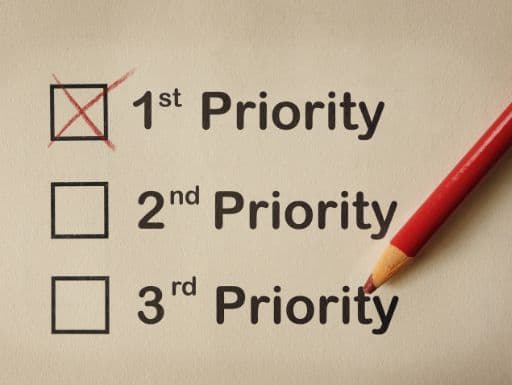
 This technique will help you create an amazing persuasive speech outline. In fact, these sales presentation examples can be used in a number of different ways.
This technique will help you create an amazing persuasive speech outline. In fact, these sales presentation examples can be used in a number of different ways.
“Wait… sales presentation? Oh, I’m not a professional salesperson. This may not work for me.”
Whether you are a salesperson or just trying to persuade coworkers to accept your ideas, this process is important to success. By the way, this technique works both in written format and in a speech. The best way to prepare for them is by treating them the same way. Start by creating a speech outline. Obviously, when you create persuasive speeches, you don’t want them to be scripted. A quick outline will typically work much better.
Amazing Persuasive Speech Outline
In the post, How to Design a Speech Quickly, we gave a few tips to create a quick presentation outline. In this session, we add a little more detail about how to make your presentation more persuasive. First things first, erase what you were taught about persuasive essays and public speaking in high school. A great persuasive speech can be broken down into these basic sections. This simple, three-step process will help you persuade even the toughest audiences.
An important part of being persuasive is to show your audience how they can get what they want. It is amazing how so many people will try to be persuasive by being self-centered. By switching the main ideas or focus from your own accolades to helping solve a customer’s needs you’re far more likely to succeed in a sale.
For instance, many salespeople begin their sales presentations by talking about their product or their company. “My company has 20 years of experience in this industry,” or “This product has a number of different features.” Using more appropriate words and following this three-step process will help you think like your audience. When you think like your audience, your audience will more likely agree with your conclusions. They’ll be less driven to throw back an oppositional claim about what you are saying or selling.
Sales Presentation Examples Using the Three-Step Persuasive Speech Outline.
Step 1: Change Your Mindset from a Feature/Benefit to a Problem Solver.
 The first step in designing sales presentations is to avoid the old “Feature/Benefit” style of presentation. In the old days, salespeople were taught to first identify a feature of the product or idea. Then, tell the audience a benefit to them of this feature. For instance, let’s say that a dentist is trying to persuade her patient to brush longer. A Feature/Benefit statement might sound like, “Brush at least two minutes (feature,) and you will have better checkups (benefit.)” It’s why many advertising campaigns relay that their specific product is recommended by 9 of 10 experts.
The first step in designing sales presentations is to avoid the old “Feature/Benefit” style of presentation. In the old days, salespeople were taught to first identify a feature of the product or idea. Then, tell the audience a benefit to them of this feature. For instance, let’s say that a dentist is trying to persuade her patient to brush longer. A Feature/Benefit statement might sound like, “Brush at least two minutes (feature,) and you will have better checkups (benefit.)” It’s why many advertising campaigns relay that their specific product is recommended by 9 of 10 experts.
That is good, but it fails to identify a problem that the patient might be experiencing that he/she wants to fix. It cuts off the chance for you to reach or solve a clear goal.
A good way instead would be to start with the problem statement. Something like, “If you want to avoid another root canal and crown, try brushing two minutes both in the morning and at night.” Even better would be to make the problem statement relevant to your audience on a daily basis. Show them how you have a relevant solution to their daily lives.
If you are selling a product, think about the customer’s problem, not what your product does. For instance, a feature of a computer might be the speed of the processor. The benefit is a more efficient workday. However, what problem will this increased speed solve? It gets rid of that spinning wheel of death on your computer screen. The point is that when you make the solution personal to the person, you will be more persuasive.
By the way, if you are looking for a shorter, easier version of this technique, try this post. Persuasive Impromptu Speech Strategies.
Step 2: Identify the Three Most Important Problems that Your Product or Idea Solves.
 If you are sure you know what the audience’s most important problem is, then you can skip this step. However, most of the time, we won’t have all of the information needed to identify what that single challenge is. To reach a clear goal, you need to delve into the right topic your audience base is after. Find their particular point of view and adapt your speech to fit their needs. It is a good idea to create a few different bullet points that each solve a potential problem. That way, you have a better chance of your audience saying, “I definitely want that.” You’ve found common values with them.
If you are sure you know what the audience’s most important problem is, then you can skip this step. However, most of the time, we won’t have all of the information needed to identify what that single challenge is. To reach a clear goal, you need to delve into the right topic your audience base is after. Find their particular point of view and adapt your speech to fit their needs. It is a good idea to create a few different bullet points that each solve a potential problem. That way, you have a better chance of your audience saying, “I definitely want that.” You’ve found common values with them.
Erase the idea that you need to write out a complete persuasive speech outline template. These three problem statements become the backbone of your persuasive speech outline. An easy way to do this is to just repeat step one a couple of more times instead of moving to the next step. Another way is to ask yourself, “What are the major problems that my product or idea solves?”
For instance, if you are selling a car to someone, these items may be potential problems. “I’m embarrassed to invite friends to ride with me in my old clunker.” “I spend too much money on gasoline.” “My car has been in the shop twice in the last year.” If you know these are the potential problems, you can easily design a series of relevant ideas that solve them.
Step 3: Prove to Your Audience that You Can Solve These Problems.
 Finally, once you have well-designed bullet points, you have to prove that your solution will solve these problems. Your evidence can’t just be your opinion, though. Instead, use a few pieces of external evidence to prove your point. External evidence can be thought of as supporting material for your key point.
Finally, once you have well-designed bullet points, you have to prove that your solution will solve these problems. Your evidence can’t just be your opinion, though. Instead, use a few pieces of external evidence to prove your point. External evidence can be thought of as supporting material for your key point.
Be careful, though. Don’t fall into the trap of presenting a list of facts, figures, or statistics. When we present a fact that is 100% true every time, human nature is to become argumentative. Your audience will think, “I bet I can come up with one situation where that fact isn’t true.” Instead, look for a real-life example (or story) of a time when you (or someone else) were able to solve the problem.
An effective persuasive argument is to use success stories from other clients or customers.”My car can solve [aforementioned issue] in the following way.” On a foundational level, create audience adaptations based on your arguments.
External Evidence Can Be Thought of as Supporting Material. However, the Best External Evidence Is a Simple Story about a Past Success.
Going back to the problem statements for the car buyer, we just need some good real-life examples of successes.
Persuasive Speech Outline Example: “I had a customer last week who told me that she and a coworker carpooled to work. She said that she was looking for a car that was more dependable. Although she didn’t come right out and say it, I think she was nervous that she and the coworker would end up stranded on the side of the road. When I handed her the keys to her new car, she smiled and said, ‘I’m driving to work Monday. I can’t wait!’“
For the gas mileage problem, an example that hits home might be in order. The improved gas mileage of the new car may allow the driver an extra couple of days between fill-ups. Over a year, that could add up to over 10 full tanks of gasoline that you save. This goes back to your audience adaptation, college students and young adults concern themselves with saving money. Money plays an important role in their lives because it allows for activities of high quality or happiness output.
Finally, just the fact that the car is new means that it will likely be more dependable. However, if you can reinforce this with a success story, you will be more persuasive.
Another Persuasive Speech Example: “One of my customers had a job where he commuted over 50 miles, each way, five days a week. He traded in a four-year-old version of this car and replaced it with the exact same make and model. He had put over 125,000 on the car and never did any maintenance except oil changes.“
Don’t lose credibility by sharing made-up stories, rather think about successes based on factual information.
Put It All Together to Create an Amazing Persuasive Speech Outline
 What makes these great sales presentation examples above really work is the basic persuasive speech outline. A top-notch speech or writing topic will have similar characteristics.
What makes these great sales presentation examples above really work is the basic persuasive speech outline. A top-notch speech or writing topic will have similar characteristics.
So, start by thinking about the problems that the audience members are experiencing. Next, organize the potential problems into the top three challenges. Finally, use stories and examples to prove that your idea or product can solve these problems. If you do this, you will create a fantastic persuasive speech outline.
Throw out the use of an attention grabber, final section, or particular action. In a conversation or presentation, the attention of the audience is already in your hand. Not all persuasive strategies are necessarily bad, but they limit your conversation to a specific purpose.
If you are looking for a way to design your presentations more quickly and easily, register for a 2-day Fearless Presentations ® class in your area. You will experience the power of these three simple steps first-hand. We’ve trained over 20,000 people in the last 18 years, and we’ve never had even a single person fail to increase confidence dramatically. The process works. It will work for you as well!
For additional details try a few of these other posts:
